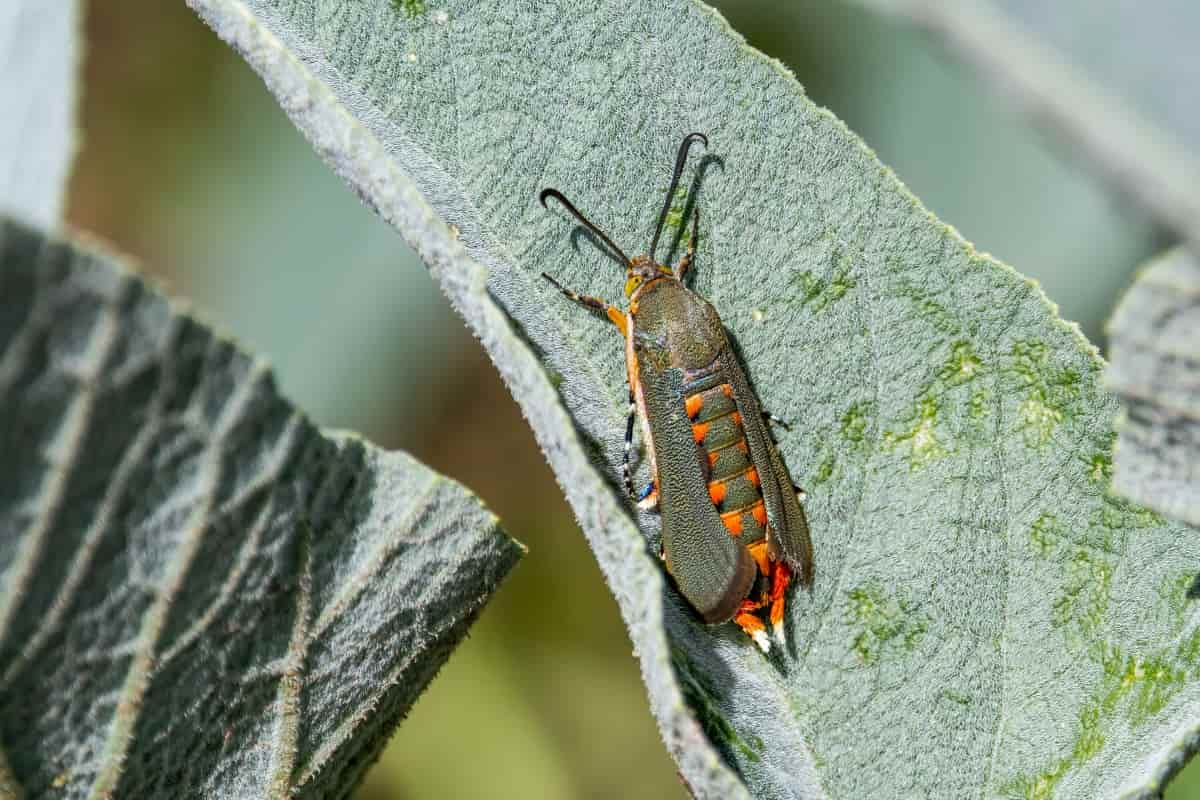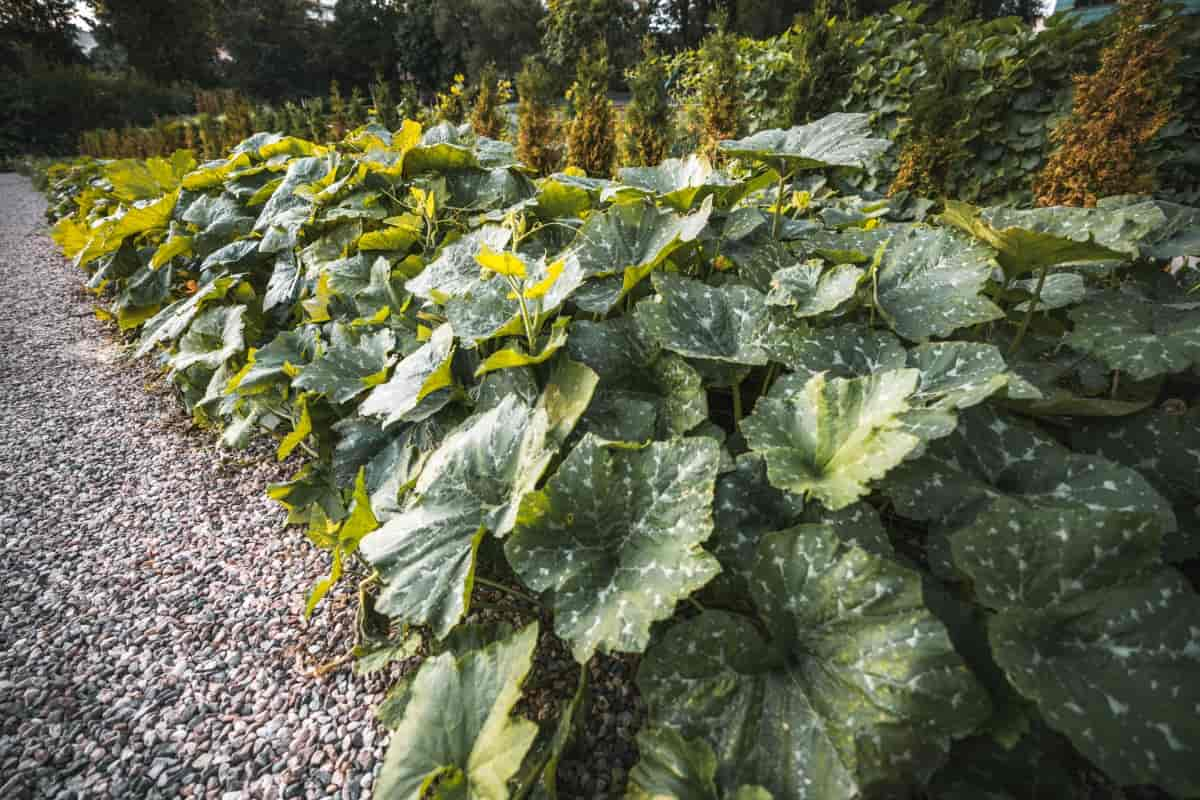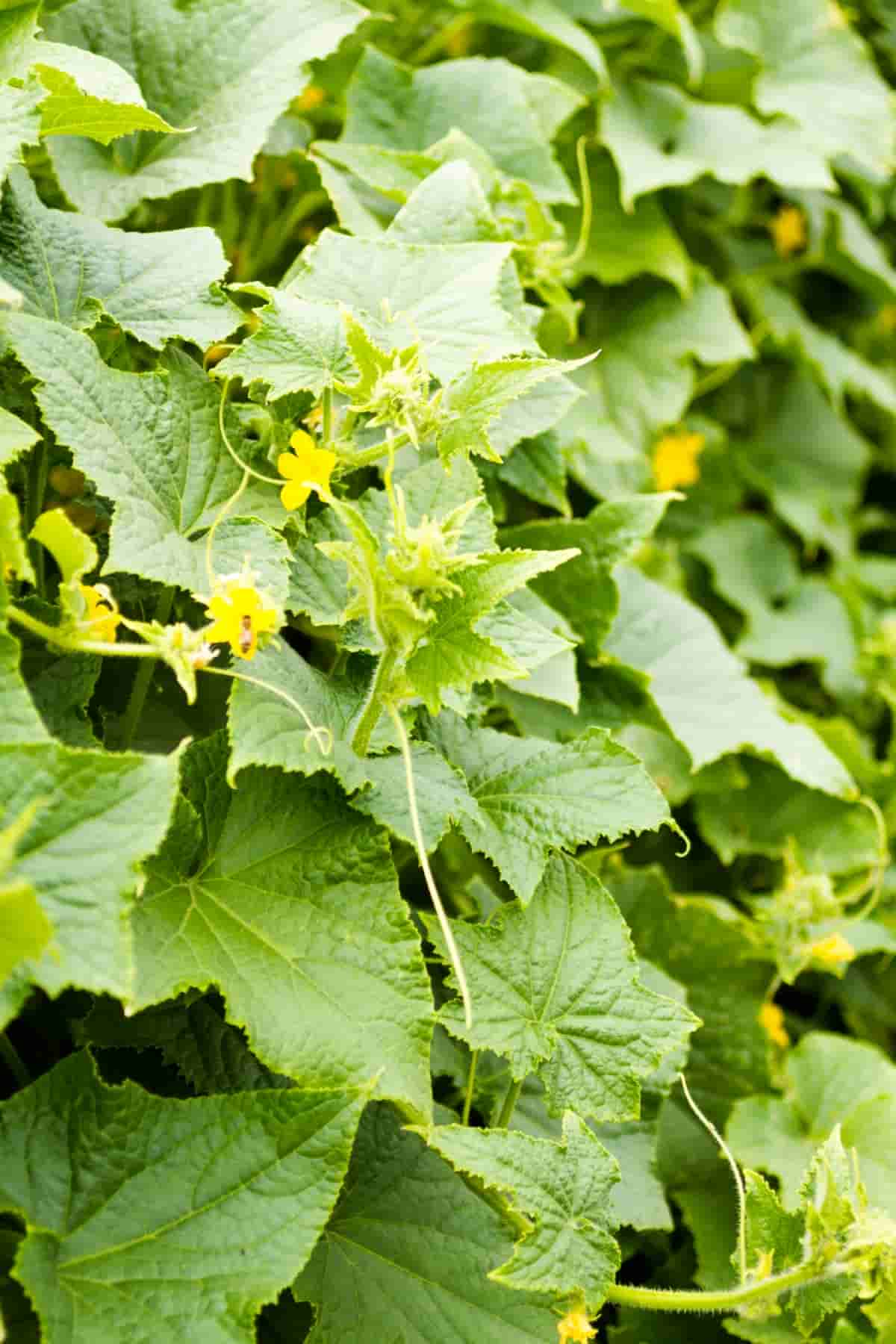Welcome to our comprehensive guide to dealing with one of the most notorious pests in the world of squash cultivation: the Squash Vine Borer. Identifying and controlling these pests is crucial for maintaining healthy squash plants, particularly pumpkins. In this guide, we will delve into various methods of identification, control, and prevention, including organic treatments, biological control, and integrated pest management (IPM) strategies.

How to Control Squash Vine Borer
Overview of Squash Vine Borer
The Squash Vine Borer (Melittia cucurbitae) is a significant threat to cucurbit crops, particularly squash, pumpkins, and gourds. Its larvae bore into plant stems, disrupting water and nutrient flow, leading to plant wilting and eventual death. Effective management strategies are crucial to mitigate its impact on crop yield and quality.
Identification and Physical Description
Adult Squash Vine Borers resemble wasps, with clear wings and an orange abdomen marked by black dots. Their metallic-green forewings distinguish them from other moth species. Larvae are legless, creamy-white with brown heads and grow up to 1 inch long, often found tunneling inside plant stems.
Life Cycle and Biology
The life cycle of Squash Vine Borers typically begins as overwintering pupae in the soil. arising as adults in late spring or early summer, they lay eggs near the base of host plants. After hatching, larvae bore into stems to feed and grow, completing their life cycle in about one year.
Host Plants and Damage
Squash Vine Borers primarily target plants in the Cucurbitaceae family, including squash, pumpkins, and gourds. Larvae bore into stems, disrupting vascular tissues and causing wilting, collapse, and eventual plant death. Economic losses result from reduced yield and quality of affected crops.
Preferred Hosts: Squash, Pumpkin, and Other Gourds
Squash Vine Borers exhibit a strong preference for cucurbit plants, particularly squash, pumpkins, and various gourds. These plants provide suitable conditions for egg laying, larval development, and pupation, making them highly susceptible to infestation and damage by this pest.
Signs and Symptoms of Infestation
Infested plants display wilting, yellowing, and eventual collapse due to damage inflicted by Squash Vine Borer larvae. Sawdust-like frass around the base of stems, along with entry holes, are indicative of their presence. Early detection of pest and intervention are critical to prevent extensive crop damage.
Lifecycle and Reproduction
Squash Vine Borers undergo a complete metamorphosis, transitioning from eggs to larvae, pupae, and finally, adult moths. After emerging from overwintering, adults mate, and females lay eggs near the base of host plants. This cyclical process perpetuates the population and infestation cycle.
Egg Laying and Hatching
Adult Squash Vine Borers deposit small, reddish-brown eggs near the base of host plants, often on leaf stems or petioles. Within 1-2 weeks, the eggs hatch into larvae, which immediately tunnel into plant stems to feed and develop. Egg laying and hatching coincide with favorable environmental conditions for larval survival.
Larval Development and Pupation
Larvae undergo several instars, progressively tunneling and feeding inside plant stems, causing extensive damage. Once fully grown, larvae exit the stems and pupate in the soil, forming protective cocoons. Overwintering as pupae, they emerge as adult moths in the following spring, initiating a new generation of Squash Vine Borers.
Monitoring and Detection
Integrated Pest Management (IPM) practices emphasize early detection of squash vine borer (SVB) infestations. Regular visual inspections of plants for wilting or frass accumulation near stems are crucial. Additionally, pheromone traps can aid in monitoring SVB adult activity. These traps utilize synthetic pheromones to attract and capture adult SVBs, providing valuable data on population dynamics and peak activity periods.
Visual Inspection for Eggs and Larvae
Detecting SVB eggs and larvae early is essential for effective management. Eggs are typically laid on plant stems near the soil line. During visual inspections, carefully examine the undersides of leaves and stems for tiny, reddish-brown eggs or signs of larval feeding, such as frass or entry holes. Prompt removal of affected plant parts can help prevent further infestation.
Use of Pheromone Traps
Employing pheromone traps is an integral component of IPM for SVB control. These traps utilize synthetic sex pheromones to attract adult male SVBs, disrupting mating and reducing egg-laying. Regular placement of traps in and around squash fields allows for early detection of adult activity and helps to monitor population levels, aiding in timely intervention strategies.
In case you missed it: Top 10 Homemade Sprays for Squash Bugs: Easy DIY Solutions for Getting Rid of Squash Bugs

Cultural Control Strategies
Cultural practices play a significant role in managing SVB infestations organically. Crop rotation, where squash is not planted in the same area for consecutive years, can disrupt SVB life cycles and reduce infestation pressure. Sanitation measures, such as removing crop residues and weeds, minimize overwintering sites for SVB pupae, thus decreasing future infestations.
Crop Rotation and Sanitation
Implementing crop rotation practices and maintaining field sanitation are key strategies for preventing SVB infestations in organic farming systems. Rotating squash crops with non-host plants can disrupt SVB life cycles by depriving them of suitable egg-laying sites. Regular removal of crop debris and weeds reduces habitat for SVB larvae and pupae, lowering the risk of infestation in subsequent plantings.
Timing Plantings to Avoid Infestation
Strategic timing of plantings can help mitigate SVB infestation risks. Planting squash later in the season, after the peak activity of SVB adults, can reduce the likelihood of egg-laying and larval infestation. Additionally, planting early-maturing squash varieties may allow for harvest before SVB populations reach damaging levels.
Mechanical and Physical Control Methods
Mechanical and physical control methods offer effective alternatives to chemical insecticides for managing SVB infestations. These methods include using row covers to physically exclude adult SVBs from laying eggs on plants. Additionally, handpicking and destroying SVB larvae found on plants can help reduce populations and prevent further damage.
Handpicking and Destruction of Larvae
Handpicking and destroying SVB larvae is a labor-intensive but effective method for organic control. Regularly inspect plants for signs of larval feeding and manually remove larvae from stems and leaves. Destroying collected larvae by crushing or disposing of them away from the garden prevents their development into adults and helps reduce future infestations.
Barrier Methods and Row Covers
Barrier methods, such as floating row covers, provide physical protection against SVB infestation. Covering young squash plants with row covers prevents adult SVBs from accessing them for egg-laying, effectively reducing infestation rates. However, proper monitoring and timely removal of covers once plants begin flowering are essential to avoid hindering pollination and fruit set.
Biological Control Options
Biological control options for squash vine borer involve the use of biological enemies such as parasitic wasps and nematodes that target the larvae or eggs of the borer. These natural enemies can help reduce squash vine borer populations without the use of synthetic chemicals, offering an environmentally friendly approach to pest management.
Natural Predators and Parasitoids
Natural predators and parasitoids play a crucial role in controlling squash vine borer populations. Predatory insects like ground beetles and predatory bugs feed on squash vine borer eggs and larvae, while parasitic wasps such as Cotesia congregata parasitize squash vine borer larvae. These natural enemies help suppress squash vine borer populations and can be encouraged through habitat management practices.
Use of Beneficial Nematodes
Beneficial nematodes, such as Steinernema carpocapsae and Heterorhabditis bacteriophora, are effective biological control agents against squash vine borer larvae. These nematodes infect and kill the larvae by releasing bacteria that cause septicemia. Application of beneficial nematodes to the soil around squash plants can help reduce squash vine borer infestations, especially when combined with other integrated pest management strategies.
In case you missed it: Homemade Remedies for Managing Vine Weevils in the Garden

Chemical Control Measures
Chemical control measures for squash vine borer typically involve the use of insecticides targeted at the adult moths or larvae. Synthetic insecticides such as carbaryl, permethrin, and spinosad are commonly used for controlling squash vine borer populations. However, careful consideration of application timing and rotation of insecticides is essential to prevent the development of insecticide resistance and minimize non-target impacts.
Appropriate Insecticides and Application Timing
Selecting appropriate insecticides and timing their application correctly is crucial for effective control of squash vine borer. Insecticides such as spinosad and carbaryl can be applied when adult moths are actively laying eggs or when larvae are hatching from eggs. Early detection of eggs and larvae through monitoring can help ascertain the optimal timing for insecticide application, maximizing effectiveness while minimizing environmental impact.
Organic Insecticides for Sustainable Management
Organic insecticides offer sustainable management options for controlling squash vine borer without synthetic chemicals. Products containing botanical extracts such as neem oil or pyrethrins can effectively target squash vine borer larvae or adults while minimizing harm to beneficial insects and the environment. Incorporating organic insecticides into integrated pest management practices supports environmentally friendly approaches to pest control.
Integrated Pest Management (IPM) Approaches
Integrated pest management (IPM) approaches for squash vine borer combine various strategies, including biological, cultural, mechanical, and chemical controls, to manage pest populations effectively. By integrating multiple tactics such as crop rotation, trap cropping, biological control, and judicious use of insecticides, growers can minimize reliance on synthetic chemicals while maintaining squash vine borer populations below economically damaging levels.
Combining Cultural, Mechanical, and Biological Strategies
Combining cultural practices such as planting resistant varieties, crop rotation, and sanitation with mechanical methods like handpicking larvae and installing physical barriers can enhance the effectiveness of biological control strategies for managing squash vine borer. This integrated approach targets multiple stages of the pest’s life cycle and reduces reliance on chemical insecticides, promoting sustainable pest management in squash production systems.
Monitoring and Threshold Levels for Intervention
Monitoring squash vine borer populations and establishing threshold levels for intervention are essential components of effective pest management programs. Regular scouting for eggs, larvae, or adult moths helps growers detect pest infestations early, allowing timely intervention to prevent yield losses. Threshold levels based on pest density and crop stage guide decision-making regarding the initiation and intensity of control measures, optimizing resource allocation and minimizing unnecessary pesticide applications.
Future Perspectives and Research
Future research on squash vine borer management is focused on developing innovative and sustainable strategies to reduce reliance on chemical insecticides. This includes exploring alternative control methods such as mating disruption, RNA interference, and plant-mediated defenses. Additionally, breeding efforts to develop squash varieties with inherent resistance to squash vine borer are underway, aiming to provide long-term solutions for pest management in squash production.
Advances in Genetic and Biological Control
Advances in genetic and biological control techniques hold promise for managing squash vine borer more effectively. Genetic engineering approaches to enhance plant resistance to squash vine borer are being explored, alongside research on the use of microbial biopesticides and pheromone-based control methods. These advancements offer potential alternatives to conventional insecticides, contributing to sustainable pest management in squash cultivation.
Developing Resistant Varieties of Squash
Developing squash varieties with natural resistance to squash vine borer is a key strategy for sustainable pest management. Breeding programs focus on identifying and incorporating genetic traits that confer resistance to borer infestations, such as thicker stems or toxic compounds that deter feeding. By selecting and breeding resistant varieties, growers can reduce reliance on chemical controls and mitigate the economic impact of squash vine borer damage.
In case you missed it: Effective Management of Arecanut Pests and Diseases: A Comprehensive Guide

Conclusion
Managing Squash Vine Borers requires a multifaceted approach that combines accurate identification, timely intervention, and preventative measures. Whether you opt for organic treatments, biological control, or integrated pest management, safeguarding your squash plants against these voracious pests is essential for a bountiful harvest. Remember, staying vigilant and implementing effective strategies will help protect your squash crops from the devastating effects of Squash Vine Borers.
- Beneficial Insects in Pest Management
- Natural Solutions for Pest Control in Flower Gardens
- Types of Fungicides Used in Agriculture
- Common Issues in the Fruit Development Stage of Pomegranate Farming
- Fruit Development Issues in Papaya: Easy Solutions and Treatment
- Soil-Borne Diseases and How to Protect Your Plants
- Practices to Prevent Disease Spread in the Garden
- From Wilted to Thriving: How to Treat Root Rot Naturally in Houseplants
- Natural Remedies to Cure Brown Spots on Fig Tree Leaves